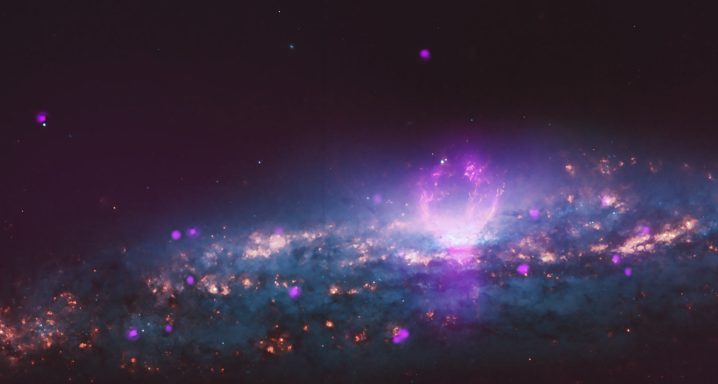
Soap bubbles are pretty, but superbubbles are prettier. This stunning image shows a new phenomenon recently discovered by astronomers, which is changing the way we think about ultra-energetic particles.
Astronomers have identified two “superbubbles,” which are thousands of light-years across and are made of a lighter gas that is suspended inside a heavier one. They believe that the bubbles were created by an energetic supermassive black hole which gave off bursts of energy, or possibly from the winds generated by young stars.
The superbubbles are located in the galaxy NGC 3079 which is 67 million light-years away from Earth. The larger of the two bubbles is 4,900 light-years across, which for reference is nearly 30 quadrillion miles (that’s 30 followed by 15 zeroes) — in other words, it’s very, very big.
The bubbles were identified by using data from both the Chandra Observatory which captures X-rays and the Hubble telescope which captures ultraviolet, visible, and near-infrared light. They are the little brothers to the Fermi bubbles, enormous bulges in the galaxy which can be seen using gamma rays and which were first discovered in the Milky Way in 2010.
These particular bubbles are interesting not only because they are pretty but also because their rim forms a kind of natural particle collider which creates unusual and very energetic particles. When the outer edge of the bubbles meets the gas around them, they generate huge shock waves which could be the source of the cosmic rays that we detect here on Earth.
“Shock waves associated with exploding stars can accelerate particles up to energies about 100 times larger than those generated in the Large Hadron Collider,” lead author Dr. Jiang-Tao Li from the University of Michigan explained to Sci News. “The outer regions of the superbubbles in NGC 3079 generate shock waves as they expand and collide with surrounding gas … When the particles cross the shock front they are accelerated, as if they received a kick from a pinball machine’s flipper.”
It is this process of acceleration which may kick-start energetic particles outwards, perhaps even toward our planet where they would strike the atmosphere and produce the cosmic rays that were discovered a century ago, but which we still do not know the source of.
The findings are published in The Astrophysical Journal.



